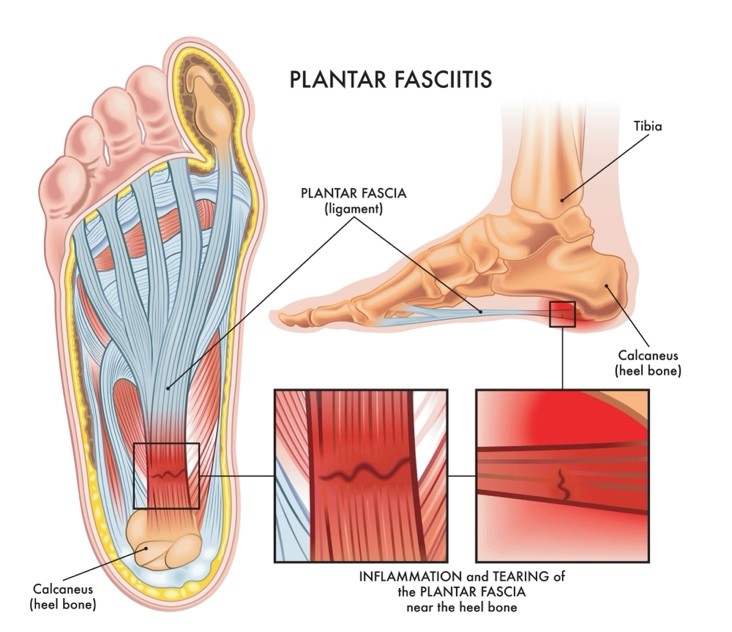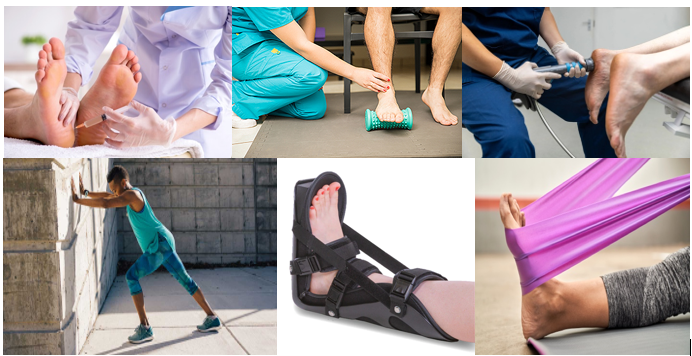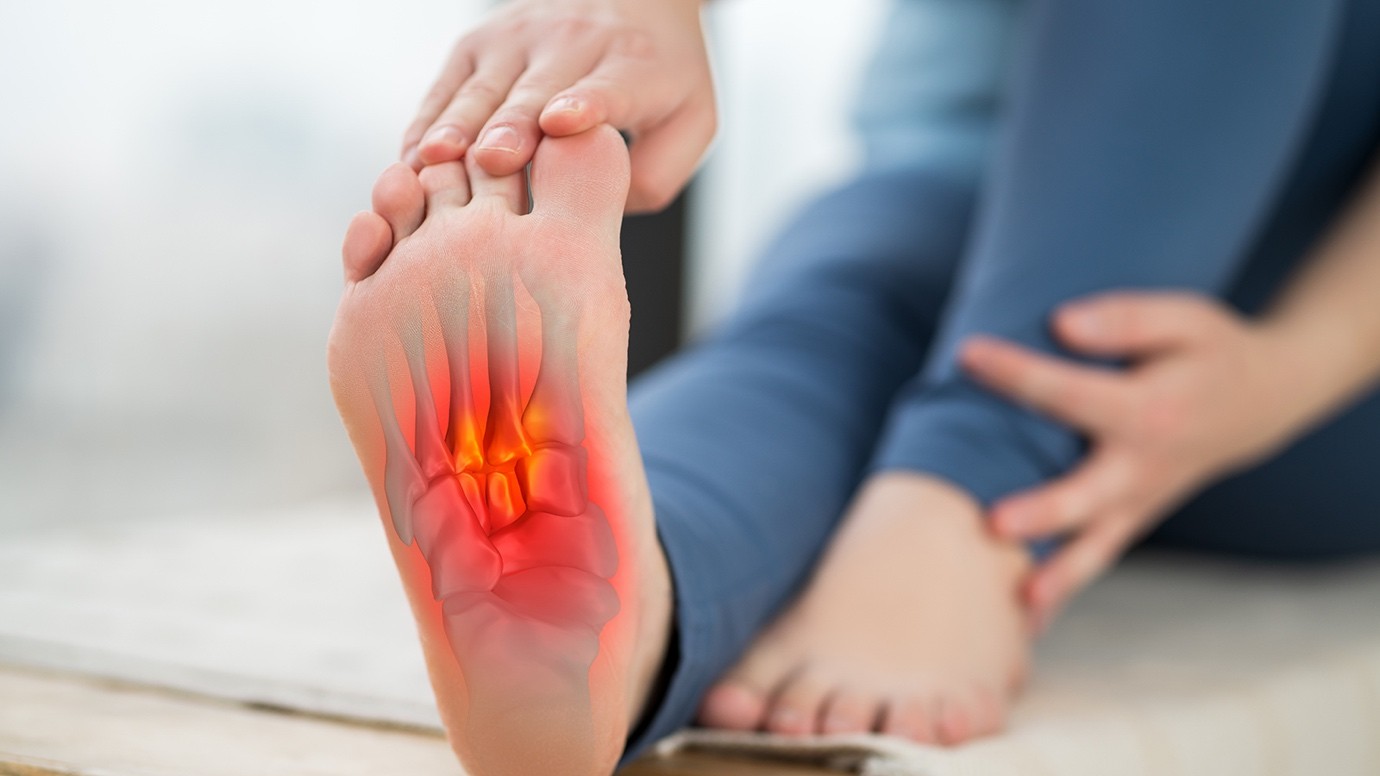September 12, 2025
Ever felt a sharp, stabbing pain in the heel with your very first steps out of bed? You might be experiencing plantar fasciitis. It’s one of the most common causes of heel pain, affecting millions of people worldwide. While the name sounds complicated, understanding this condition is the first step toward finding relief. This blog post will demystify plantar fasciitis, exploring its causes, symptoms, and the most effective strategies for treatment and prevention.
What Exactly Is Plantar Fasciitis?
At its core, plantar fasciitis is an inflammation of the plantar fascia, a thick, web-like ligament that connects your heel to the front of your foot.

This band of tissue acts like a shock absorber and supports the arch of your foot. When it becomes overstressed or strained, small tears can develop in the tissue, leading to inflammation and the characteristic pain. This pain is often most severe with the first steps in the morning or after a long period of rest. Think of it like a rubber band that has been stretched too far—it becomes less elastic and more prone to tearing.
Who Is at Risk?
While anyone can develop plantar fasciitis, certain factors can increase your risk:
- Age:It’s most common between the ages of 40 and 60.
- Physical Activity:Long-distance runners and people who spend a lot of time on their feet, like factory workers or teachers, are particularly susceptible.
- Foot Mechanics:Flat feet or a very high arch can affect how weight is distributed when you stand, placing extra stress on the plantar fascia.
- Weight:Being overweight or obese puts increased pressure on the plantar fascia, similar to the effect of wearing a heavy backpack all day.
- Improper Footwear:Shoes with inadequate arch support or soft soles can contribute to the problem.
The Tell-tale Symptoms
The most classic symptom is a stabbing pain in the bottom of your foot, near the heel. This pain is typically at its worst:
- With thefirst steps in the morning ☀️
- After standing for a long time
- After rising from a seated position
- After exercise, though not usually during it
The pain can range from a dull ache to a sharp, debilitating sensation. It’s important to note that the pain is often gradual and may not be immediately severe. Ignoring early signs can lead to a more chronic and difficult-to-treat condition.
The Road to Recovery: Treatment and Management
The good news is that most cases of plantar fasciitis can be resolved with conservative treatments. The key is to be patient and consistent.

1. Rest and Ice 🧊
- Rest:Reduce activities that aggravate the pain, such as running or long walks on hard surfaces.
- Ice:Apply an ice pack to the affected area for 15-20 minutes, 3-4 times a day, to reduce inflammation. A great trick is to freeze a water bottle and roll your foot over it.
2. Stretching and Strengthening
Regular stretching is crucial for relieving tension and improving flexibility.
- Calf Stretches:Stand facing a wall, place your hands on it, and stagger your feet. Bend the front knee and keep the back leg straight, pressing the heel into the floor. Hold for 30 seconds.
- Plantar Fascia Stretch:Sit down and cross the affected foot over your opposite knee. Gently pull your toes toward your shin until you feel a stretch in the arch of your foot. Hold for 15-30 seconds.
- Towel Stretch:Before getting out of bed, loop a towel around the ball of your foot and gently pull your foot toward you, keeping your knee straight. This helps loosen the fascia before you take your first steps.
3. Support and Footwear 👟
- Supportive Shoes:Wear shoes with excellent arch support and a cushioned sole. Avoid walking barefoot on hard surfaces, even at home.
- Orthotics:Over-the-counter or custom-made orthotic inserts can provide crucial arch support and help distribute pressure more evenly.
- Night Splints:These devices hold your foot in a flexed position overnight, stretching the plantar fascia and Achilles tendon. They can be incredibly effective in reducing morning pain.
4. Other Treatments
- Physical Therapy:A physical therapist can provide a personalized plan of stretches and exercises to address your specific needs.
- Medication:Over-the-counter pain relievers like ibuprofen can help reduce pain and inflammation.
- Corticosteroid Injections:For severe, persistent pain, a doctor may recommend a steroid injection into the heel. While they provide temporary relief, they’re not a long-term solution.
- Extracorporeal Shock Wave Therapy (ESWT):This non-invasive treatment uses sound waves to stimulate healing in the plantar fascia.
- Surgery:In rare cases where conservative treatments fail after 6-12 months, surgery may be considered to detach the plantar fascia from the heel bone. This is a last resort.
Prevention is Key
Once you’ve recovered, it’s important to take steps to prevent a recurrence.
- Maintain a Healthy Weight:Losing excess weight can significantly reduce stress on your feet.
- Choose the Right Shoes:Regularly replace worn-out athletic shoes and avoid high heels.
- Vary Your Exercise:Alternate high-impact activities like running with low-impact ones like swimming or cycling.
- Stretch Regularly:Make a daily habit of stretching your calves and feet.
Plantar fasciitis can be a frustrating and painful condition, but with the right approach, relief is well within reach. By understanding the causes, recognizing the symptoms, and committing to a consistent treatment plan, you can get back on your feet and step out of pain. Your feet carry you through life—it’s time to give them the care and attention they deserve.
Disclaimer: The information presented is accurate and evidence-based, drawing from reputable sources and adhering to ethical guidelines. This information is for general knowledge and informational purposes only and does not constitute medical advice.


